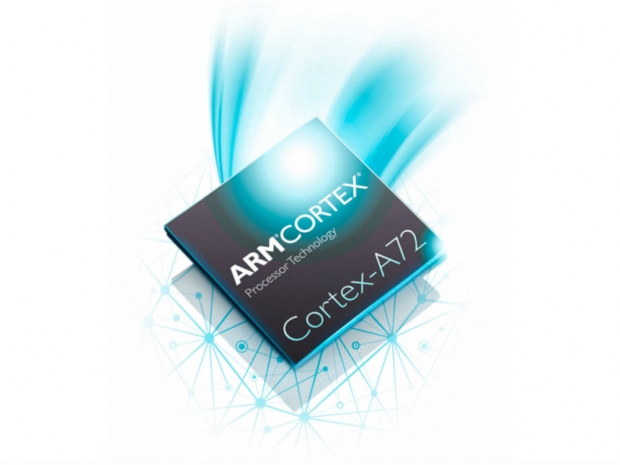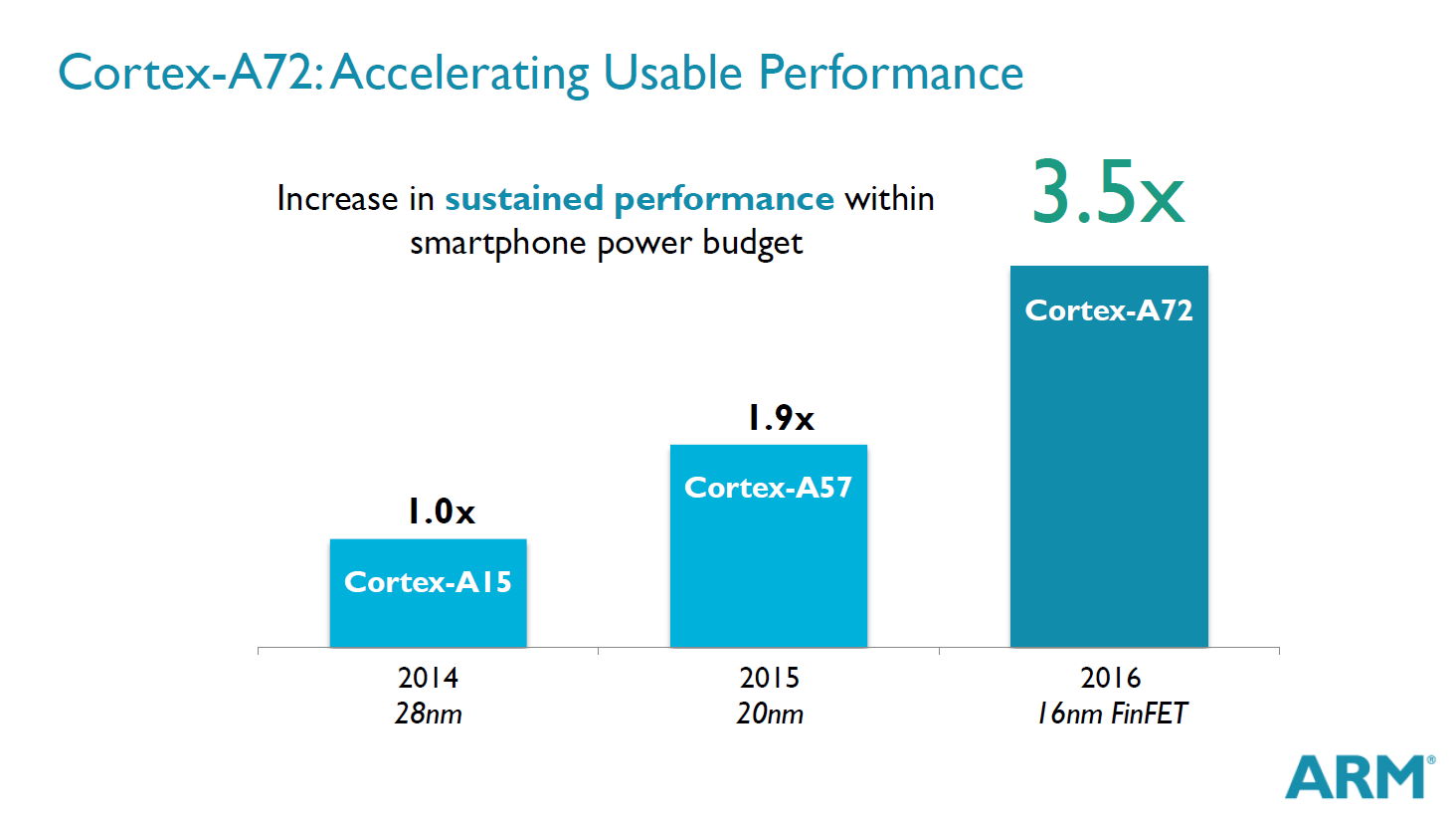The new Cortex-A72 CPU is about 3.5 times faster than the 32-bit Cortex-A15 that has been on the market for a couple of years.
Cortex-A72 promises unprecedented efficiency
The A15 also struggled with unimpressive efficiency, but ARM says the new A72 should use 75% less energy compared to the A15. There is no word on how it compares to the Cortex-A57 in terms of efficiency, but it's 1.9x faster than an A57 on 20nm silicon.
Like the Cortex-A57, the new A72 core can be used in big.LITTLE designs, with Cortex-A53 cores on the side. ARM said such a big.LITTLE configuration could save 40-60% power on top of the improved core efficiency.
The Cortex-A72 has been developed for sustained frequencies of about 2.5GHz using new FinFET nodes (14nm and 16nm). However, ARM said the new design is scalable and can be used in bigger form factors as well.
ARM is also helping vendors migrate from 28nm and 32nm planar nodes with POP IP for TSMC’s upcoming 16nm FinFET+ (16FF+) process.
A number of major companies in the SoC space, including TSMC, MediaTek, Rockchip, Cadence and HiSilicon welcomed ARM’s latest announcement, describing the A72 as a “game changing” design.
New Mali-T880 GPU to back Cortex-A72
ARM used the opportunity to announce the new Mali-T880 GPU, which promises to deliver 1.8x more performance than the Mali-T760, with a 40% reduction in power consumption across identical workloads. The Mali-T880 is backed by the Mali-V550 video processor and Mali-DP550 display processor.
The full package is capable of displaying 10-bit 4K content, with HEVC decode and encode on a single core. With eight cores, the new GPU and display processor can deliver 4K at 120fps. The updated display processor also offers enhanced composition, scaling, rotation and post-processing, offloading the GPU to improve efficiency.
Coming in early 2016
The new chips are expected to launch in early 2016, roughly coinciding with TSMC’s 16FF+ process.
Suk Lee, TSMC senior director, Design Infrastructure Marketing Division, said: “The combination of TSMC 16FF+ process technology and the implementation advantages of ARM POP IP gives our customers the opportunity to rapidly bring highly optimized mobile SoCs based on Cortex-A72 to market in early 2016.”
There is still no word on A72 products using alternative nodes, namely Samsung’s and GlobalFoundries’ 14nm node, but we can only assume that the timeline is similar, if not identical.






